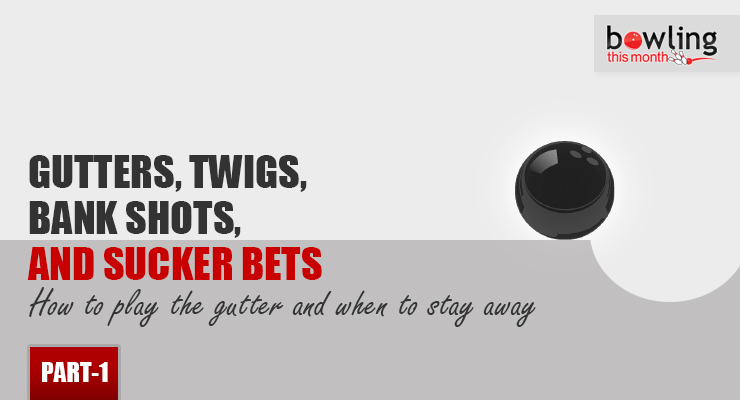Your mom may have tried hard to keep you away from people like me, people that try to lure you to the gutters of America. Hey, what does she know. Come on and follow me to the dark side. I will eliminate any fears of that deep dark cavern we call the gutter, and teach you that sometimes the gutter is the place to be.
With this article, I begin a two-part series to guide you in deciding when you should play the gutter and how you should play it. Part 1 will focus mainly on the “when and why” of playing the gutter in its various forms, and when you should stay away. Part 2 will include instructions for your physical and mental game, in case you come up short on your gutter playing skills.
What is gutter play?
We obviously don’t actually throw the ball into the gutter… not on purpose anyway; you get a zero for that. “Playing the gutter” is a generic term that simply means we are throwing the ball closer to the gutter than any other part of the lane. But that generic term doesn’t adequately describe all the different ways we can play the gutter.
There are many techniques to playing the gutter. “How” you play the gutter is just as important as “when” you should play the gutter. Some methods of gutter play are far more effective at times than others. Some bowlers’ ideas of “gutter play” just means that the ball goes somewhere out there near the gutter before it hooks. There is an art and science to real gutter play, and it needs to be performed with a specific goal in mind.
Ways to play the gutter
Here are a few of the terms that I use to describe various ways to play the gutter:
“The twig”
The twig means that you are only using the first three or four boards of the lane for the first 35 to 40 feet of lane length. For example, the ball is laid down on the three board at the foul line and stays outside the four board until it starts to hook toward the pocket at 38 feet.
“Three is one”
This means that you have to pretend that the three board is actually the one board. I have observed a few situations where the gutter was the right way to play the lane, but if the ball went out to the one-two board at the breakpoint it could not make ...
This article is only available to Bowling This Month subscribers. Click below to get instant access to this article and all of our other premium instructional content.
Subscribe to Bowling This Month
Already a Bowling This Month subscriber? Click here to log in.
